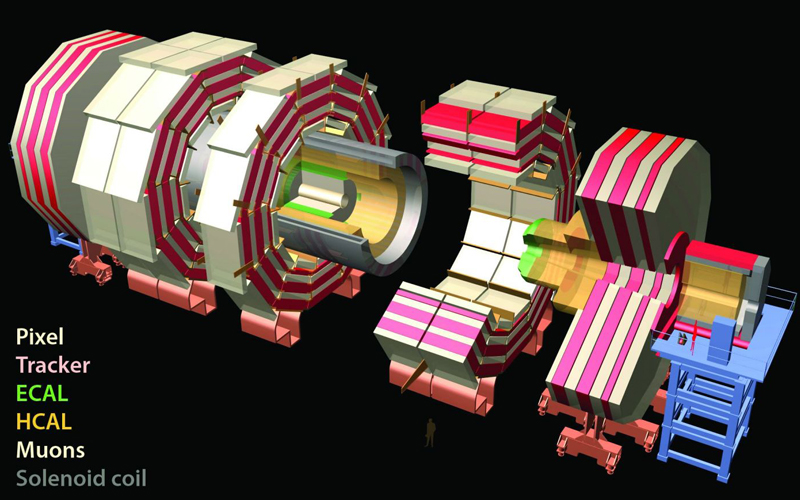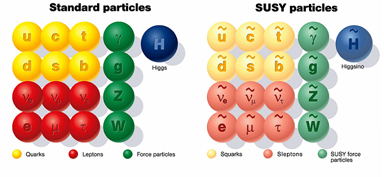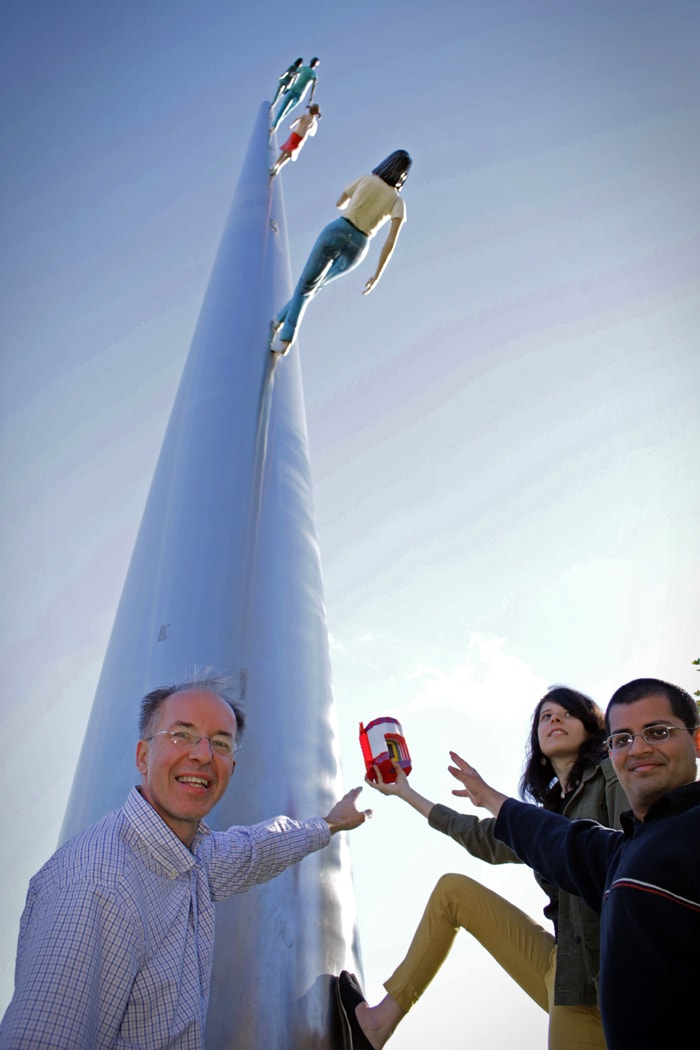Search for Supersymmetry

The Large Hadron Collider (LHC) is the world’s most powerful particle accelerator, colliding protons at almost the speed of light 40 million times every second. While most people are familiar with the LHC from its discovery of the Higgs Boson five years ago, the collider’s work is far from done.
The LHC has four collision points. At each of these sits a giant detector that records the momenta, trajectories, and types of particles produced by the collisions. Carnegie Mellon physicists have been instrumental in the development and operation of one of these detectors, called the Compact Muon Solenoid (CMS). The CMS Experiment is funded by the U.S. Department of Energy's Office of Science.
Over the years, Physics Professors Manfred Paulini, James Russ, Helmut Vogel, and emeritus Professor Tom Ferguson have made numerous contributions to the CMS experiment. One of these contributions was developing the software that monitors the data coming from the experiment’s electromagnetic calorimeter—a sub-detector consisting of 80,000 lead-tungsten crystals and read-out chips that measure and record the energies of electrons and photons. Through this monitoring system, the detector operations team knows immediately if there are any irregularities in the data and can react quickly to fix any potential problems.
"Monitoring the data quality is essential for data taking," Paulini explained, "When picking fruits you want to spot the bad apples right away and not continue filling up your crate with apples from a tree that only has rotten apples."
Carnegie Mellon graduate students, Michael Andrews, Tanmay Mudholkar, and Menglei Sun, together with their advisor Paulini, are personally invested in the quality of the incoming data because they are looking for very rare theoretical processes that could help answer some lingering questions in physics. One big question is why the math in the Standard Model of physics—a well-accepted framework that describes the subatomic universe—is so unbalanced. The detector could one day find a new set of particles predicted under a theory called supersymmetry that would balance the Standard Model’s equations.
After years of searching, physicists haven’t found any signs of supersymmetry yet. But Carnegie Mellon physicists think that we possibly just haven’t been looking in the right direction. Therefore, they now embarked on a search for light supersymmetric particles that would escape the detector unnoticed—much like how neutrinos leave the LHC’s collisions without a trace. Theory predicts that these light supersymmetric particles appear with an entourage of known particles, such as W and Z bosons. Carnegie Mellon researchers are studying these known particles to see if there are any missing pieces that could help fill-in the Standard Model’s puzzles.
"There are no more low hanging fruits in the search for supersymmetry," said Paulini. "Now we need to explore the far corners and outposts of the kingdom of supersymmetry, and that's what we are doing at CMU."
By: Jocelyn Duffy, jhduffy@andrew.cmu.edu, 412-268-9982

 Professor Manfred Paulini
Professor Manfred Paulini